The Neolithic Dwellings in Stara Zagora are unique historical monument of global importance. They are part of the 100 National Tourist Sites. The Neolithic Dwellings Museum was built over the archaeological find itself. It is protected and preserved by constant temperature and humidity. The site is in fact a prehistoric village mound which was inhabited in the early Neolithic period-the 7th-6th Century BC until the early Bronze age- the 3rd Century BC. In 1968 some ceramic pots and other items were found there during excavation works. Later, a two-story building considered as the best-preserved house in Europe from that era was found, assistant Petar Kalchev from Stara Zagora Regional History Museum explains.
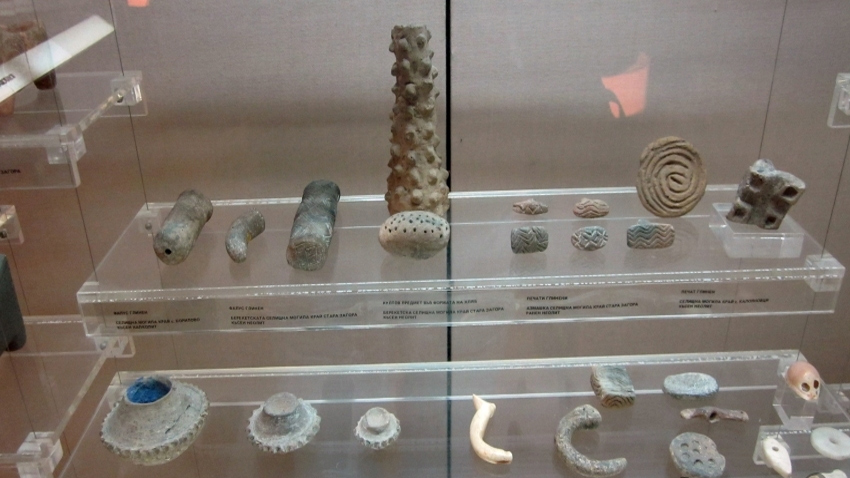
“I feel excitement when I stand in front of the remains of this dwelling, because I imagine the life style of the people who used to live on this place some 8,000 years ago. The ancient houses were built of peeled dry oak stakes which were fixed into the ground at a distance of 25 to 30 centimeters. The house construction also included thin rods. The two sides of the house skeleton were plastered with clay mixed with straw. The double-eaves roof was made of wooden dowels and beams covered with straw and coarse rye straw. The two-storey house is quite solid and was nearly 7 meters high. Some of the oak stakes were 18-20 centimeters wide.

The best-preserved furnace of that period was found in this house. The people who inhabited this house used to grind the grains in stone hand mills. Eleven storehouses for grain stocks were found during the excavations. The platform above the ground floor level was used as bedroom. A chamber containing a furnace, stone hand mills, a storehouse, a wet stone, many ceramic pots, a large pile of ceramic ritual models of wheat grains, as well as altars used for fertility rituals were found. This house was inhabited by intelligent and rational people with a very rich knowledge who managed to make a solid and cozy home with primitive instruments.”
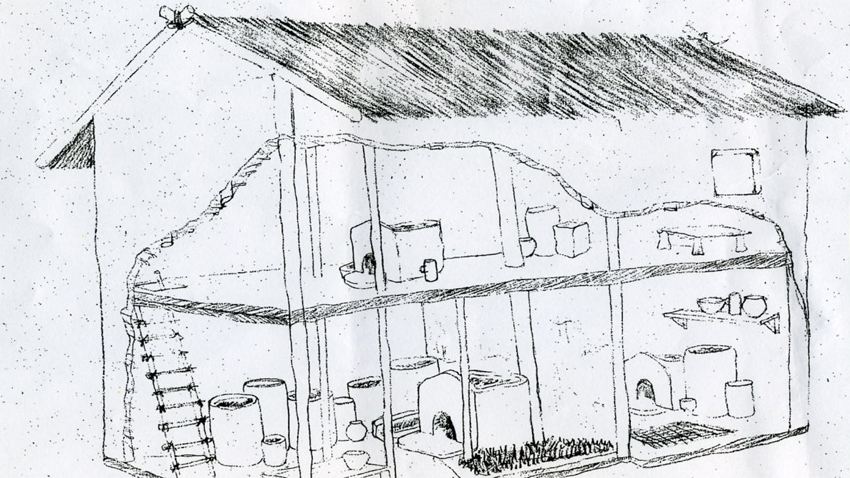
Assistant Kalchev told Radio Bulgaria details about the occupation of the population from this region:
“The local people were engaged mainly with agriculture and stock-breeding. 70% of all bones discovered during the excavations belonged to animals which were bred for wool, milk, fur and meat. Carbonized wheat grains were also discovered in this house. It turned out that the size of the wheat planted 8,000 years ago was similar to the one planted in Europe in the 19th century. When the ancient people discovered copper they started to deal with ore output, ore processing and manufacture of various copper instruments. They also made ceramic pots, flint and stone instruments. Carpentry was a main branch, because it was linked with the construction of the ancient houses. These people were the first farmers and stock-breeders on these lands. They also practiced other crafts which made life of local people easier.”
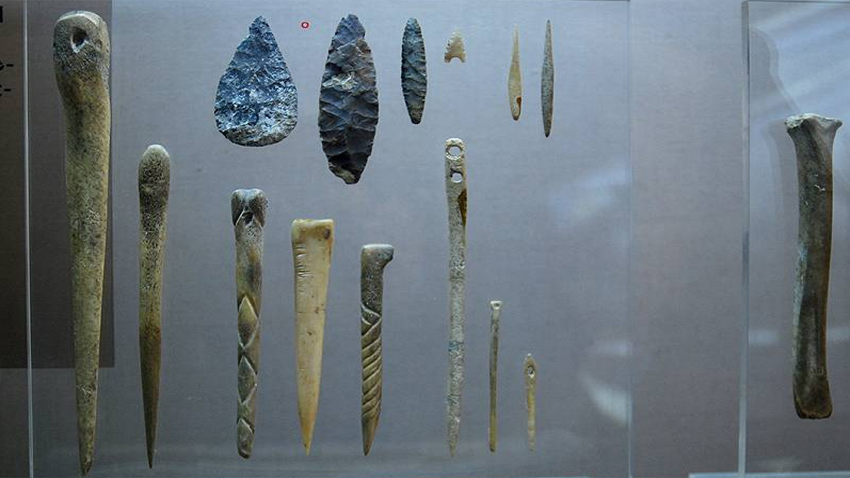
The exposition Prehistoric Art in Stara Zagora Region is displayed at the museum’s basement. It consists of wonderful finds discovered during the archaeological studies of the village mounds in this region. Mr Kalchev told Radio Bulgaria details about the artefacts that stirred visitors’ interest the most.

“The reaping hooks made of deer horn are among the inventions of the ancient people who inhabited our lands. In the Middle East these reaping hooks were made of wood and were quite heavy, whereas the ancient people who lived on our lands used to soak deer horns in hot water and twisted them in various shapes. They attached flint blades glued with resin to the horn. Thus, the instrument was able to reap a whole wisp in three cuts.
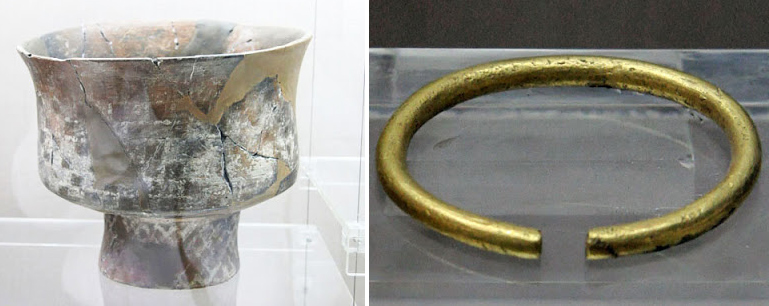 A bowl which was perhaps used as a calendar was also found during the excavations. A total of 365 dark and white squares symbolizing the change from day to night were depicted on the bowl. The lily-shaped ritual pots with the solar sign on their bottom are also very interesting. People can also see various sets and pots decorated with winged deities, deer, bulls, etc.The oldest golden bracelet found on our lands in an ancient dwelling dating back to the early Chalcolithic period (the beginning of the 5th century BC) is also on display. This children’s bracelet was made of native gold.
A bowl which was perhaps used as a calendar was also found during the excavations. A total of 365 dark and white squares symbolizing the change from day to night were depicted on the bowl. The lily-shaped ritual pots with the solar sign on their bottom are also very interesting. People can also see various sets and pots decorated with winged deities, deer, bulls, etc.The oldest golden bracelet found on our lands in an ancient dwelling dating back to the early Chalcolithic period (the beginning of the 5th century BC) is also on display. This children’s bracelet was made of native gold.
Some of the exponents are linked with various rituals- sowing, reaping and protection of fields from calamities.

I would distinguish one of the earliest marble figures found in Europe- a female body with highlighted thighs, hips and seat. People can also see a female figure with copper adornment, belt and greaves which was made of animal rib. The exposition sows the incredible culture, aesthetic taste and skills of the people who made these wonderful items.”
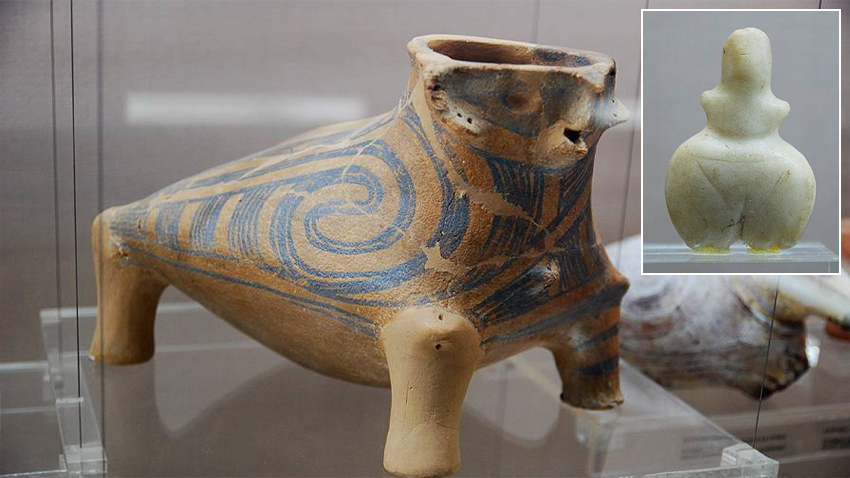
English version: Kostadin Atanasov
Photos: museum.starazagora.netVolunteers joined the efforts to clean and restore the monastery St. Spas near Bakadzhik peak. The campaign is being organized on 2 November by Stoimen Petrov, mayor of the nearby village of Chargan, the Bulgarian news agency BTA reports. The..
There are three special days on the calendar of the Bulgarian Orthodox church, on which believers pray to God and give alms to honour the memory of their dear departed. The three All Souls’ Days always fall on the Saturdays before Meat..
One frosty November morning in 1917, as World War I was raging, a Zeppelin L 59 took off from the air base near Yambol bound for Tanzania. The purpose of the flight was to deliver ammunition and materials to the German military units in a remote..
Today, the Bulgarian Orthodox Church honors the holy great martyr Varvara - a maiden from a noble family, beheaded for her Christian faith at the..

+359 2 9336 661
